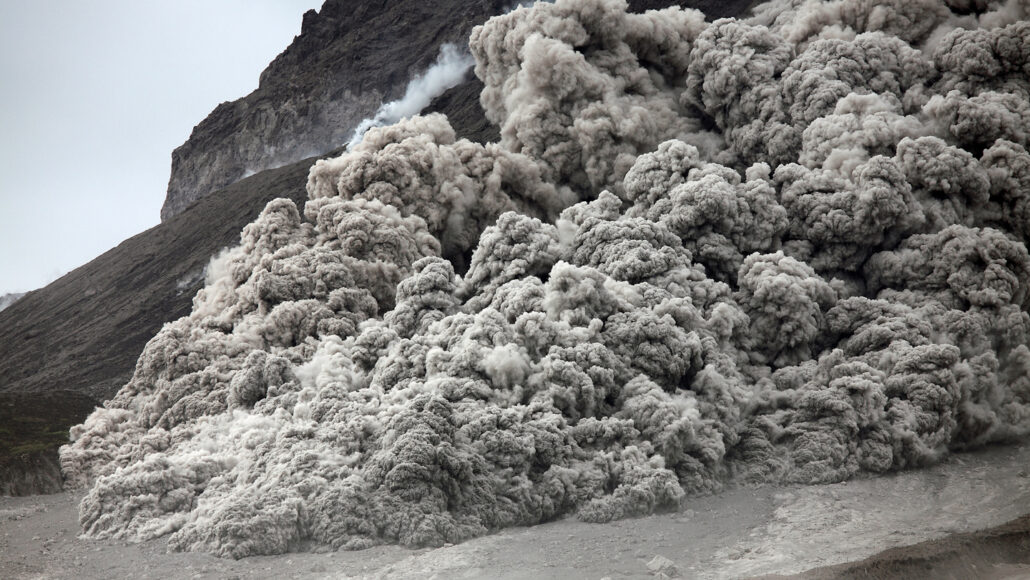ash: (in geology) Small, lightweight fragments of rock and glass spewed by volcanic eruptions.
average: (in science) A term for the arithmetic mean, which is the sum of a group of numbers that is then divided by the size of the group.
colleague: Someone who works with another; a co-worker or team member.
eddy: A circular motion that develops in some liquid or gas and that moves in a direction opposite to the main current. In water, this may create a whirlpool.
eruption: (in geoscience) The sudden bursting or spraying of hot material from deep inside a planet or moon and out through its surface. Volcanic eruptions on Earth usually send hot lava, hot gases or ash into the air and across surrounding land. In colder parts of the solar system, eruptions often involve liquid water spraying out through cracks in an icy crust. This happens on Enceladus, a moon of Saturn that is covered in ice.
factor: Something that plays a role in a particular condition or event; a contributor.
field: An area of study, as in: Her field of research is biology. Also a term to describe a real-world environment in which some research is conducted, such as at sea, in a forest, on a mountaintop or on a city street. It is the opposite of an artificial setting, such as a research laboratory.
geologic: An adjective that refers to things that are related to Earth’s physical structure and substance, its history and the processes that act on it. People who work in this field are known as geologists.
infrasound: Sound waves with frequencies below the lower limit of human hearing.
New Zealand: An island nation in the southwest Pacific Ocean, roughly 1,500 kilometers (some 900 miles) east of Australia. Its “mainland” — consisting of a North and South Island — is quite volcanically active. In addition, the country includes many far smaller offshore islands.
particle: A minute amount of something.
pressure: Force applied uniformly over a surface, measured as force per unit of area.
pyroclastic flow: Hot clouds of ash and rock that sweep down a volcano’s slopes during an eruption. These flows can move at hurricane speeds.
sensor: A device that picks up information on physical or chemical conditions — such as temperature, barometric pressure, salinity, humidity, pH, light intensity or radiation — and stores or broadcasts that information. Scientists and engineers often rely on sensors to inform them of conditions that may change over time or that exist far from where a researcher can measure them directly. (in biology) The structure that an organism uses to sense attributes of its environment, such as heat, winds, chemicals, moisture, trauma or an attack by predators.
simulation: (v. simulate) An analysis, often made using a computer, of some conditions, functions or appearance of a physical system. A computer program would do this by using mathematical operations that can describe the system and how it might change over time or in response to different anticipated situations.
turbulence: A chaotic, flowing mass of swirling air. Airplanes that run into turbulence high above ground can give passengers a bumpy ride.
volcano: A place on Earth’s crust that opens, allowing magma and gases to spew out from underground reservoirs of molten material. The magma rises through a system of pipes or channels, sometimes spending time in chambers where it bubbles with gas and undergoes chemical transformations. This plumbing system can become more complex over time.
volcanology: The study of volcanoes. Scientists who work in this field are known as volcanologists.
wave: A disturbance or variation that travels through space and matter in a regular, oscillating fashion.








